It is hard to imagine the world below our feet. Despite us all inhabiting planet earth, our home that is over 4.5 billion years old, students know very little about the inner workings of this amazing planet. Mud and rocks are part of everyday childhood play, but are rarely the focus of inquiry or scientific investigation outside of what they are told. In order to help to promote true scientific understanding there needs to be an experience that allows “carrying out complex projects and regularly critiquing, comparing, revising, rethinking, and review-ing [student] ideas about these projects” (Linn, Clark, & Slotta, 2003, p.530). This type of action cannot be accomplished through reading information from a book alone. In order to truly make thinking visible and allow for authentic collaboration, we have to make science accessible in the hands of students, this is what helps to foster an attitude of inquiry and promote lifelong learning (Linn, Clark, & Slotta, 2003). To bring the world under us to life I wanted to help edit the Rock Cycle page to allow for more collaboration between students, hands on activities to be done with the digital resources, and unique ways students could represent their thinking other than just answering fill in the blank questions.
The Rocky Cycle WISE project existed as a series of images, text based information, and verbal responses. Essentially the current project acted as a digital textbook. My first task was to edit the introduction to extend the rock cycle graphic that was provided and include a YouTube video from the Science Guy himself Bill Nye, bringing the learning to life and providing more of a relatable context for the students to understand what is under the ground.
Second I wanted to add way for students to make meaning while acquiring new scientific vocabulary. I created a Google Doc for students to record their new vocabulary words, but also a chance to move beyond the textbook definition. Students are invited to capture a contextual image of the word as well as provide their understanding of the term. Because this is a Google Doc, students could also do this collaboratively in teams of learners.
Next I wanted students to have a physical experience beyond the words and images on the page. If we allow for students to model tasks that place an emphasis of the nature of science we help to foster a deeper understanding and promote a lifelong interest and learning of the concept (Gobert, Snyder, & Houghton, 2002). I made a Google Slides choose your own adventure style of learning that took students on a virtual reality experience of the rock cycle using Google Expeditions.
While the virtual experience is valuable and engaging, students still need a real life context to collaborate, practice and apply their learning. The final task was to give students a chance to explore the identification tests for the three types of rocks while being able to demonstrate their learning through screencasting and creating rock trading cards.
This new WISE exploration balances the making of thinking visible, collaboration, and making science hands on and accessible. These activities “takes place somewhere between the extremes, where students are guided, through a process of scientific investigation, to particular answers that are known to the teacher( Furtak, 2006, p.454)
Trish
PS
One extreme difficulty I found while exploring the WISE resources is that a large majority of them are not Chromebook friendly. I therefore made sure that the project I edited could be completely accessible using a Chromebook, which happens to be the largest majority device found in my school district.
References
Furtak, E. M. (2006). The problem with answers: An exploration of guided scientific inquiry teaching. Science Education, 90(3), 453-467
Gobert, J., Snyder, J., & Houghton, C. (2002, April). The influence of students’ understanding of models on model-based reasoning. Paper presented at the Annual Meeting of the American Educational Research Association (AERA), New Orleans, Louisiana. This is a conference paper.
Linn, M., Clark, D., & Slotta, J. (2003). Wise design for knowledge integration. Science Education, 87(4), 517-538. http://onlinelibrary.wiley.com/doi/10.1002/sce.10086/abstract
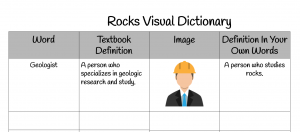
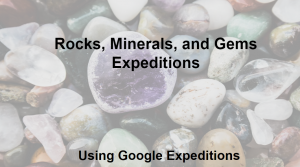
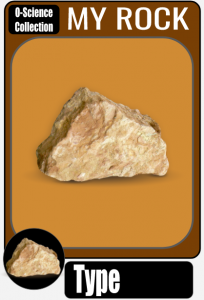
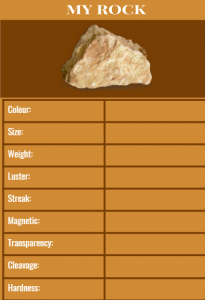
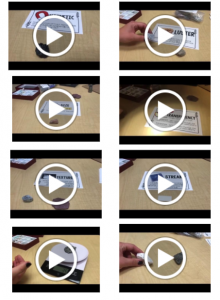
Hi Trish,
I like how students are provided with the opportunity to constantly assess themselves as they work through the project, completing activities and gradually gaining understanding. The kind of strategy that gives them broad tools to keep learning. When I run projects like yours, I always wonder when in the project it is likely that the students start considering concepts they already know to understand or justify the new ones. I use a combination of both reflection and collaboration activities, but I have often found collaboration more effective to trigger students’ inquiry process. What is your thought about this?
I agree. Collaboration has really evolved for me from the traditional sense of “group work” where students complete some kind of task together with imposed tasks. I like to focus on collaboration as a provocation for inquiry where students want to work together to solve a problem, are empowered and enthusiastic to share what they learn, and can bring their own strengths and talents to the table to support the group. I think in many ways digital tools help us to create this type of environment.
Hi Trish.
I love how you update the project to be more interactive and hands on rather than just digital. It is important for students to be able to interact and visualize the concepts not just see them on a screen. Having students create a product that demonstrates their learning but is not just a series of questions allows diverse learners to demonstrate their learning effectively. Improvements like yours would make it much more likely that I would use these in class. Well done!
Dave
Thank you Dave. I really wanted to make sure that we effectively design for the fact we are still learning in a face to face environment. This blended concept does not mean a simple digital consumption of information with a replication of answers. I want the technology to enhance the learning environment by providing opportunities for collaboration and demonstration of understanding in unique ways. Many of the simulations I found in the WISE environment did not account for the humans working side by side with our students everyday.
Hey Trish! I’m back again, but this time instead of feeling bad you had no comments I’m feeling bad because you already have 2, and I don’t want to add to your “reply plate”!! 😀
For me, themes and pillars that arose from this week’s readings were the following:
•Making science accessible / promoting personal relevance of science
•Knowledge-building based on student’s prior knowledge
•Inquiry
•Teacher as facilitator, connecting tasks to both curriculum and student’s real-world experiences
•Making learning visible for students AND teachers
•Collaboration (teacher-student, student-student), learning from each other through peer exchange a-la Vygotsky
•Reflection
•Developing lifelong learning skills
•Feedback is the BRIDGE between what students understand (or do) and what’s aimed to be understood (or done)
PHEW!!
Why did I list those? Well, to help me be specific about why I think your activity is so well-designed. You nailed every pillar I encountered for SKI/WISE!
•Making science accessible / promoting personal relevance of science
You immediately grounding the activity using a video (Bill Nye Forever!!)
•Knowledge-building based on student’s prior knowledge
You provided a Doc for students to keep track of newly-learned vocabulary; vocabulary that will only exist once the student considers if they already know a given term
•Inquiry
Choose your Own Adventures give students agency and a sense of true exploration, learning on-the-fly through the creatively-designed trading card game and accompanying videos
•Teacher as facilitator, connecting tasks to both curriculum and student’s real-world experiences
The very existence of this activity covers this point
•Making learning visible for students AND teachers
Student work is tracked through Slides and Docs, as well as through in-class facilitation, and the nature of the primarily cloud-based lesson allows for easy tweaks post-lesson
•Collaboration (teacher-student, student-student), learning from each other through peer exchange a-la Vygotsky
Collaboration all around, whether it’s sharing vocab or pics of that vocab, or trading cards (which I think would absolutely knock it out of the park for most students unless there’s no way to Collect ‘Em All!)
•Reflection
Apparent in the vocab activity, although perhaps there could be more of an overarching plenary-style reflection component added in future?
•Developing lifelong learning skills
Direct instruction is notably absent from this activity, and good riddance! Students are clearly expected to think for themselves throughout the activity, whether it’s metacognitively determining which words are new and connecting them with images, or decided on what path to take during the Choose Your Own Adventure. The integrated collaborative element will also help students to practice working with others; an increasingly essential real-world skill.
•Feedback is the BRIDGE between what students understand (or do) and what’s aimed to be understood (or done)
Students would naturally receive feedback from each other throughout the activity. The feedback given to students by the teacher is not overly obvious here, but knowing the capability of the G Suite (and knowing you, Trish) the teacher would likely leverage Google’s commenting functionalities to provide formative feedback as students progress.
Overall I loved your activity – could you tell? as it’s exactly the type of activity I’d love to deliver if I was able (college-level is still quite restrictive).
I did have two questions:
•Is there room for traditional, marks-based assessment in your activity, or would it be more of a qualitative activity?
•Do you think marking such an activity out of, say, 100, would detract from the learning experience?
Scott I am always pleased as punch to have a reply from you!! I am seriously blushing though at your very kind words! I was a very worthwhile challenge to ensure all aspects of SKI/WISE were covered as I added to an existing lesson. This exercise really made me think about other projects and lessons I could reframe using this structure of qualities to other lessons and activities of inquiry. It has been a busy week of restructuring lessons with this new vision. Part of that has been exactly what you spoke about, how do we consider assessment as part of the equation. The particular lessons I have been working on are for our elementary programs of study in math and science. Our elementary report card system is a qualitative reporting document that speaks to the nature of the learning and does not include quantitative marks. The activities become the assessments as they act as a vehicle for a demonstration of learning with students creating materials that showcase their understanding and explain their own learning in screencasts. The trouble is moving this constructivist concept to our junior high and high school environments. If we have a constructivist approach to teaching (learn by doing) then we need to also have a constructivist approach to assessment (evaluate through the doing) with a process method of evaluation. If the task is changing then so does our assessment. I have seen so many struggles with an inquiry activity followed by a multiple choice test. There is no easy answer here, but I personally think we can use a qualitative approach to support the process over the product as we come up with alternative assessments for student inquiry.
What do you think are reasonable steps that we could take to allow this kind of teaching and learning at higher levels that would not get stopped in their tracks? I truly want to move forward but am often stopped with the “but they need to prepare for university” when I suggest anything alternative.
Hey Trish! I’m glad you were pleased to have a reply from me 🙂 That brightens my day!
I honestly do not know the answer to your question about reasonable steps to take to allow higher learning to take advantage the benefits of constructivist-style lessons. It’s a question that’s haunted me ever since I started teaching at the college level; how to consolidate what I’ve been learning about how students/people learn best when it is quite literally mandatory for me to include a 50% final exam in most of my courses. in the meantime I’ve been doing what I can to include open-ended, student centred, inquiry, etc, type of activities in my lessons while still preparing students for “traditional tests”. I kind of hate it, actually. Being tethered to the mandate in that way. Makes me daydream of working somewhere with a little more freedom like your current situation.
I’d love for others to chime in here, though! I have never been able to truly bridge the gap between the trends/research pointing in the direction of developing real-world problem solving skills with the overly assessment-obsessed nature of most post-secondary systems.